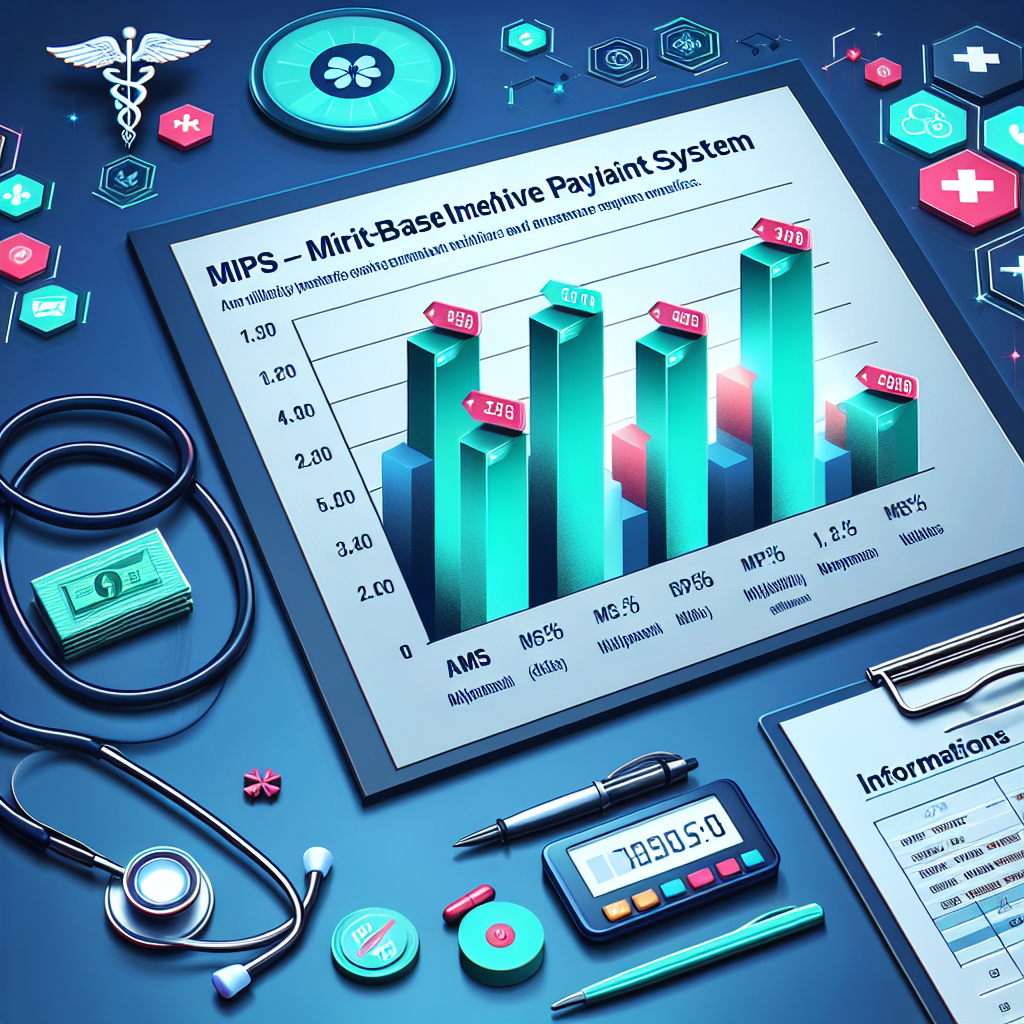Nextech: Understanding MIPS Scores

The healthcare industry is constantly evolving, with new technologies and systems being introduced to improve patient care and streamline operations. One such system is the Merit-based Incentive Payment System (MIPS), which is part of the Quality Payment Program (QPP) introduced by the Centers for Medicare & Medicaid Services (CMS). MIPS scores are crucial for healthcare providers as they directly impact reimbursement rates and reflect the quality of care provided. This article delves into the intricacies of MIPS scores, exploring their significance, calculation, and impact on healthcare practices.
1. The Genesis of MIPS: A Historical Overview
To understand MIPS scores, it’s essential to first explore the origins of the Merit-based Incentive Payment System. MIPS was established under the Medicare Access and CHIP Reauthorization Act of 2015 (MACRA), which aimed to shift the focus from volume-based to value-based care. This section provides a historical overview of MIPS, highlighting its evolution and the reasons behind its implementation.
The Shift from Volume to Value
Before the introduction of MIPS, healthcare providers were primarily reimbursed based on the volume of services provided, a model known as fee-for-service. This approach often led to unnecessary tests and procedures, driving up healthcare costs without necessarily improving patient outcomes. Recognizing the need for change, policymakers sought to incentivize quality over quantity, leading to the development of value-based care models.
MACRA was a significant legislative step in this direction, repealing the Sustainable Growth Rate (SGR) formula and introducing the Quality Payment Program (QPP). MIPS emerged as a key component of the QPP, designed to reward healthcare providers for delivering high-quality, efficient care.
The Four Pillars of MIPS
MIPS is built on four performance categories, each contributing to a provider’s final score:
- Quality: This category assesses the quality of care provided, based on a set of measures relevant to the provider’s specialty.
- Cost: This evaluates the cost-effectiveness of care, considering factors such as resource use and patient outcomes.
- Improvement Activities: This measures the provider’s efforts to improve clinical practice and patient engagement.
- Promoting Interoperability: This focuses on the use of certified electronic health record technology (CEHRT) to improve patient care and data exchange.
Each category is weighted differently, with Quality and Cost typically carrying the most significant weight. Providers are scored in each category, and these scores are combined to determine the final MIPS score.
Implementation and Challenges
The implementation of MIPS was not without challenges. Many healthcare providers faced difficulties in understanding the new system and adapting their practices to meet the requirements. The complexity of the scoring system and the need for accurate data reporting added to the burden, particularly for smaller practices with limited resources.
Despite these challenges, MIPS has been instrumental in driving improvements in healthcare quality and efficiency. By linking reimbursement to performance, it has encouraged providers to focus on delivering better care and achieving better patient outcomes.
2. Decoding MIPS Scores: Calculation and Components
Understanding how MIPS scores are calculated is crucial for healthcare providers aiming to optimize their performance and maximize reimbursement. This section breaks down the components of MIPS scores, explaining the calculation process and the factors that influence the final score.
Quality Performance Category
The Quality category is the most heavily weighted component of the MIPS score, typically accounting for 30% of the total score. Providers select measures relevant to their practice and report on their performance. These measures cover various aspects of care, such as patient safety, care coordination, and clinical effectiveness.
Providers are scored based on their performance relative to national benchmarks. High performance on quality measures can significantly boost a provider’s MIPS score, while poor performance can have the opposite effect.
Cost Performance Category
The Cost category evaluates the cost-effectiveness of care provided by the healthcare provider. Unlike the Quality category, providers do not need to submit data for this category, as CMS calculates the cost score based on claims data.
Cost measures include Medicare Spending per Beneficiary (MSPB) and Total Per Capita Cost (TPCC). Providers are compared to their peers, and those who deliver high-quality care at a lower cost are rewarded with higher scores.
Improvement Activities Performance Category
The Improvement Activities category accounts for 15% of the total MIPS score. Providers choose from a list of activities designed to improve clinical practice and patient engagement. These activities may include care coordination, patient safety initiatives, and population health management.
Providers earn points based on the activities they complete, with more complex activities earning more points. The goal is to encourage providers to adopt practices that enhance care quality and patient satisfaction.
Promoting Interoperability Performance Category
The Promoting Interoperability category, formerly known as Advancing Care Information, focuses on the use of certified electronic health record technology (CEHRT). This category accounts for 25% of the total MIPS score and emphasizes the importance of data exchange and patient engagement.
Providers are scored based on their ability to meet specific objectives, such as e-prescribing, patient access to health information, and health information exchange. Successful implementation of CEHRT can lead to higher scores in this category.
Final Score Calculation
The final MIPS score is a composite of the scores from each performance category, weighted according to their respective importance. The score ranges from 0 to 100, with higher scores indicating better performance.
Providers with scores above a certain threshold receive positive payment adjustments, while those below the threshold may face penalties. The threshold is determined annually by CMS and is designed to incentivize continuous improvement in care quality and efficiency.
3. The Impact of MIPS Scores on Healthcare Practices
MIPS scores have a significant impact on healthcare practices, influencing reimbursement rates, reputation, and overall performance. This section explores the various ways in which MIPS scores affect healthcare providers and the strategies they can employ to optimize their scores.
Financial Implications
One of the most direct impacts of MIPS scores is on reimbursement rates. Providers with high scores receive positive payment adjustments, which can significantly boost their revenue. Conversely, providers with low scores may face penalties, reducing their Medicare reimbursements.
The financial implications of MIPS scores underscore the importance of optimizing performance in each category. By focusing on quality improvement, cost reduction, and effective use of technology, providers can enhance their scores and secure higher reimbursement rates.
Reputation and Patient Perception
MIPS scores also play a crucial role in shaping a healthcare provider’s reputation. High scores are often associated with high-quality care, which can enhance a provider’s reputation and attract more patients. Conversely, low scores may raise concerns about the quality of care provided, potentially deterring patients.
Providers can leverage their MIPS scores as a marketing tool, highlighting their commitment to quality and efficiency. By showcasing their performance in each category, they can build trust with patients and differentiate themselves from competitors.
Operational Efficiency
Optimizing MIPS scores requires healthcare providers to streamline their operations and adopt best practices. This often involves investing in technology, improving care coordination, and enhancing patient engagement. These efforts can lead to greater operational efficiency, reducing costs and improving patient outcomes.
By focusing on continuous improvement, providers can create a culture of excellence that benefits both patients and staff. This can lead to higher staff satisfaction, reduced turnover, and improved patient satisfaction scores.
Case Studies: Success Stories
Several healthcare practices have successfully optimized their MIPS scores, achieving significant improvements in performance and reimbursement. For example, a primary care practice in California implemented a comprehensive quality improvement program, focusing on preventive care and chronic disease management. As a result, they achieved a MIPS score of 95, earning a substantial positive payment adjustment.
Another example is a multi-specialty group in Texas that invested in advanced analytics and data reporting tools. By leveraging these technologies, they were able to identify areas for improvement and implement targeted interventions, resulting in a MIPS score of 98.
Challenges and Solutions
Despite the benefits of optimizing MIPS scores, many healthcare providers face challenges in meeting the requirements. Common challenges include data reporting, understanding the scoring system, and managing the administrative burden.
To overcome these challenges, providers can seek support from professional organizations, invest in technology solutions, and engage in continuous education and training. By staying informed and proactive, providers can navigate the complexities of MIPS and achieve success.
4. Strategies for Improving MIPS Scores
Improving MIPS scores requires a strategic approach, focusing on quality improvement, cost reduction, and effective use of technology. This section outlines key strategies that healthcare providers can employ to enhance their performance in each MIPS category.
Quality Improvement Initiatives
Quality improvement is at the heart of MIPS, and providers can enhance their scores by implementing targeted initiatives. These may include:
- Clinical Guidelines: Adopting evidence-based clinical guidelines to standardize care and improve patient outcomes.
- Patient Safety Programs: Implementing safety protocols to reduce errors and enhance patient safety.
- Care Coordination: Improving communication and collaboration among care teams to ensure seamless patient care.
By focusing on these areas, providers can achieve higher scores in the Quality category and improve overall patient satisfaction.
Cost Reduction Strategies
Reducing costs without compromising quality is a key challenge for healthcare providers. Strategies for achieving this include:
- Resource Optimization: Identifying and eliminating wasteful practices to reduce costs.
- Chronic Disease Management: Implementing programs to manage chronic conditions and prevent costly complications.
- Preventive Care: Focusing on preventive care to reduce the need for expensive treatments and hospitalizations.
By adopting these strategies, providers can improve their scores in the Cost category and enhance their financial performance.
Enhancing Improvement Activities
The Improvement Activities category offers opportunities for providers to earn points by engaging in activities that enhance care quality and patient engagement. Strategies for success include:
- Patient Engagement: Implementing tools and programs to engage patients in their care and improve satisfaction.
- Care Coordination: Enhancing coordination among care teams to improve patient outcomes and reduce errors.
- Population Health Management: Using data analytics to identify and address population health needs.
By focusing on these areas, providers can earn higher scores in the Improvement Activities category and demonstrate their commitment to quality care.
Leveraging Technology for Promoting Interoperability
The Promoting Interoperability category emphasizes the use of technology to improve care quality and data exchange. Providers can enhance their scores by:
- Implementing CEHRT: Adopting certified electronic health record technology to streamline data exchange and improve care coordination.
- Data Analytics: Using data analytics tools to identify trends and opportunities for improvement.
- Patient Portals: Implementing patient portals to enhance patient access to health information and improve engagement.
By leveraging technology, providers can achieve higher scores in the Promoting Interoperability category and enhance their overall performance.
Continuous Education and Training
Continuous education and training are essential for healthcare providers aiming to optimize their MIPS scores. Strategies for success include:
- Professional Development: Engaging in ongoing professional development to stay informed about best practices and industry trends.
- Staff Training: Providing training for staff to ensure they understand the requirements and can effectively implement strategies for improvement.
- Collaboration: Collaborating with peers and professional organizations to share knowledge and resources.
By investing in education and training, providers can enhance their understanding of MIPS and achieve success in optimizing their scores.
5. The Future of MIPS: Trends and Predictions
The healthcare landscape is constantly evolving, and MIPS is no exception. This section explores the future of MIPS, highlighting emerging trends and predictions for the system’s evolution.
Increased Focus on Value-Based Care
The shift towards value-based care is expected to continue, with MIPS playing a central role in driving this transformation. As healthcare providers increasingly focus on quality and efficiency, MIPS will continue to evolve to support these goals.
Future iterations of MIPS may place even greater emphasis on patient outcomes and cost-effectiveness, encouraging providers to adopt innovative approaches to care delivery.
Integration of Advanced Technologies
Technology will play an increasingly important role in the future of MIPS. Advanced analytics, artificial intelligence, and machine learning are expected to become integral components of the system, enabling providers to gain deeper insights into their performance and identify opportunities for improvement.
The integration of these technologies will enhance the accuracy and efficiency of data reporting, making it easier for providers to optimize their scores and achieve success.
Greater Emphasis on Patient Engagement
Patient engagement is expected to become a key focus of MIPS in the future. As healthcare providers recognize the importance of involving patients in their care, MIPS will likely evolve to include more measures related to patient engagement and satisfaction.
This shift will encourage providers to adopt patient-centered approaches to care delivery, enhancing the overall patient experience and improving outcomes.
Expansion of Performance Categories
The performance categories within MIPS may expand in the future to include new areas of focus. For example, social determinants of health and health equity are becoming increasingly important considerations in healthcare, and future iterations of MIPS may incorporate measures related to these areas.
This expansion will encourage providers to address broader health issues and promote equity in care delivery, ultimately improving population health outcomes.
Policy Changes and Regulatory Updates
As the healthcare landscape continues to evolve, policy changes and regulatory updates are expected to impact MIPS. These changes may include adjustments to performance thresholds, updates to reporting requirements, and modifications to the weighting of performance categories.
Healthcare providers will need to stay informed about these changes and adapt their strategies accordingly to ensure continued success in optimizing their MIPS scores.
Conclusion
MIPS scores are a critical component of the healthcare landscape, influencing reimbursement rates, reputation, and overall performance. By understanding the intricacies of MIPS and implementing strategies for improvement, healthcare providers can optimize their scores and achieve success in delivering high-quality, efficient care.
The future of MIPS is likely to be shaped by emerging trends such as value-based care, advanced technologies, and patient engagement. By staying informed and proactive, providers can navigate the complexities of MIPS and continue to deliver exceptional care to their patients.
As the healthcare industry continues to evolve, MIPS will remain a vital tool for driving improvements in care quality and efficiency. By embracing the opportunities presented by MIPS, healthcare providers can enhance their performance, improve patient outcomes, and secure a brighter future for their practices.





